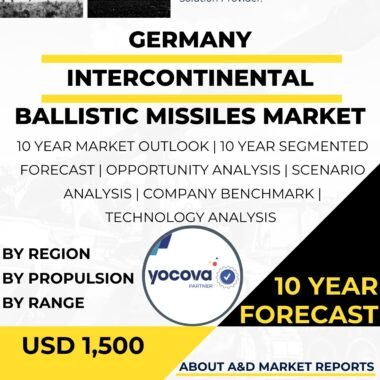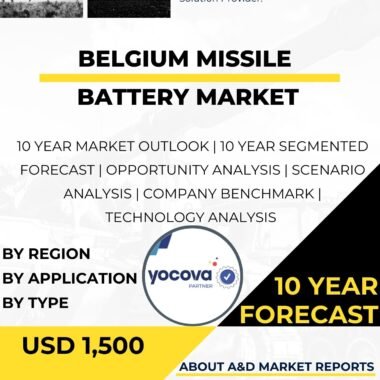Description
Overview of the Missile Propulsion Market in Australia
The Australia Missile propulsion Market plays a vital role in strengthening the nation’s defense capabilities. Propulsion technology determines a missile’s speed, range, and maneuverability. As a country facing diverse regional challenges, Australia invests in advanced missile propulsion systems to enhance its defense readiness and support allied security efforts. This article explores the market’s significance, technologies, major players, and future outlook.
Strategic Importance of Missile Propulsion
The missile propulsion market in Australia reflects the nation’s commitment to maintaining a credible defense posture. As a member of the Five Eyes alliance and a close U.S. defense partner, Australia’s strategy depends on technological strength and interoperability. The growth of missile programs in the Indo-Pacific region and the emergence of hypersonic weapons make propulsion innovation essential for deterrence and national security.
Core Propulsion Technologies
The missile propulsion market in Australia includes several key propulsion technologies used in ballistic, cruise, and anti-ship missiles.
Solid Rocket Propulsion
Solid rocket motors are widely used for their simplicity and reliability. They deliver high thrust-to-weight ratios, making them suitable for a broad range of missile applications. Australia has developed strong expertise in this field, producing solid motors for domestic and allied defense programs.
Liquid Rocket Propulsion
Liquid-fueled rockets offer precise thrust control and can be shut down or restarted during flight. These features improve flexibility and accuracy. The development of liquid propulsion systems often involves cooperation between Australian defense firms and international partners.
Key Players in the Australian Missile Propulsion Market
Several domestic and international companies contribute to the missile propulsion market in Australia. Local firms such as NIOA and Tectonica Australia have enhanced national capabilities through innovation and collaboration. Major defense contractors like Lockheed Martin, MBDA, and Raytheon maintain a strong presence, supporting Australia’s missile programs and sharing advanced propulsion technologies.
Research and Development Efforts
Ongoing research and development remain central to the growth of the missile propulsion market in Australia. One of the most active areas of focus is hypersonic propulsion, driven by rising interest in high-speed weapons. Hypersonic missiles travel at extreme speeds, making them difficult to intercept and highly effective in modern warfare.
Australia continues to invest in hypersonic propulsion research to stay ahead in this domain and strengthen cooperation with allied nations. Efforts also include optimizing propellant materials, improving combustion efficiency, and designing advanced nozzles for better performance.
Future Trends and Innovations
The missile propulsion market in Australia is expected to expand further as the defense sector prioritizes modernization. The development of miniature propulsion systems for drones and small missiles is gaining traction. These innovations support unmanned reconnaissance, surveillance, and precision strike operations.
Additionally, research into eco-friendly propellants aims to reduce the environmental impact of missile testing and production. Such initiatives align with broader sustainability goals while maintaining defense efficiency.
Conclusion
The missile propulsion market in Australia remains central to national defense advancement. Solid and liquid propulsion systems form the core of Australia’s missile technology base, while hypersonic research demonstrates the country’s commitment to cutting-edge innovation. Collaboration between domestic and international partners drives progress, strengthens capability, and ensures Australia’s position as a leader in regional defense technology.




